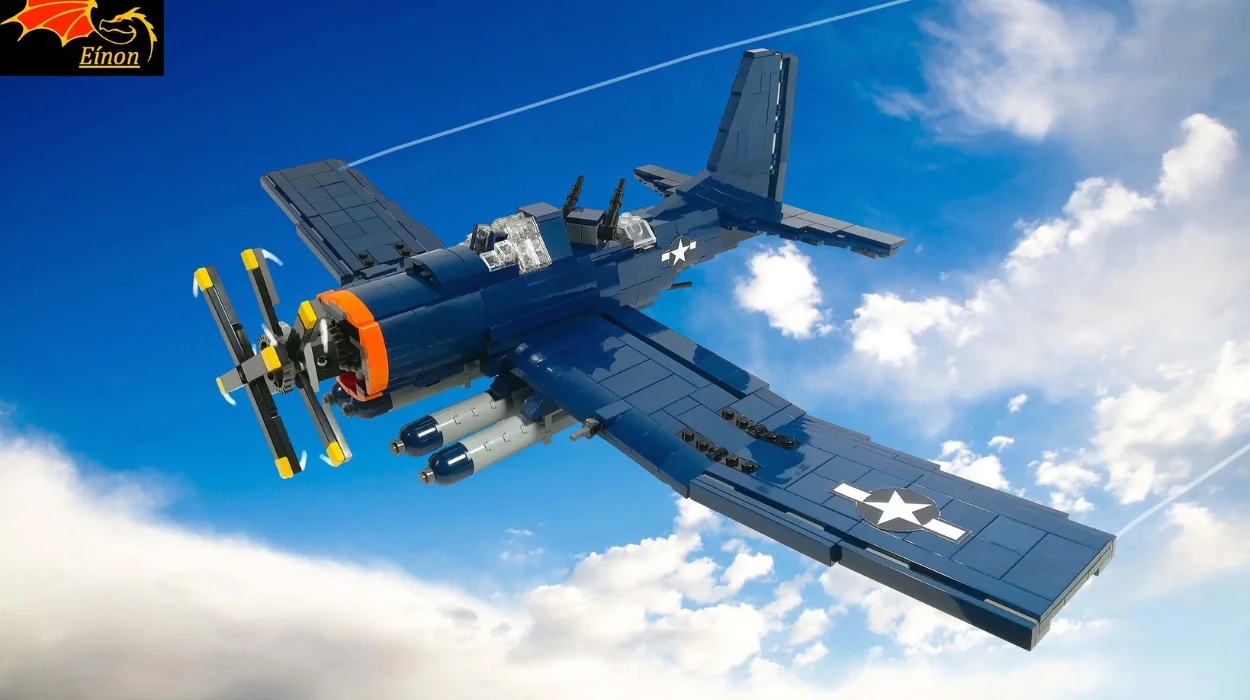Douglas XTB2D Skypirate – a torpedo prototype developed by Douglas Aircraft Company during World War II. Skypirate did not enter mass production despite its innovative design. It has good capabilities, but the change in the naval war and advances in aviation technology prevented it from being produced. This article explains the history, the design and the legacy of the XTB2D Skypirate. A fascinating “what if” in aviation’s annals.
Background on the Need for a New Torpedo Bomber
In the early 1940s, the US Navy sought to increase its offensive capabilities by investing in a new generation of aircraft that could be flown from its growing fleet of larger aircraft carriers. Torpedo bombers from that era, such as the Douglas TBD Devastator and Grumman TBF Avenger, had a lot to give. However, they were vulnerable to opposing anti-aircraft guns and sophisticated fighters.
In 1942, the Navy requested proposals (RFPs) from manufacturers of torpedo aircraft with improved range, payload capacity, and versatility. The Midway aircraft carrier, which was under construction at the time and featured larger flight decks and improved support for heavier planes, was to use these aircraft.
Douglas Aircraft Company created the XTB2D Skypirate designed to meet Navy requirements.
Design and Development
Conceptual Objectives
Skypirate was conceived as a high-performance, long-range torpedo plane that could transport an unheard-of payload consisting of four torpedoes. Or a combination of bombs with other ordnance. This design took advantage of new Midway Class carriers, which were able to accommodate bigger and heavier aircraft.
Engineering and Features
The XTB2D Skypirate, a one-engine low-wing monoplane powered by a Pratt & Whitney R-4360 Wasp Major radial, was one of the world’s strongest piston engines. This air-cooled 28-cylinder turbojet engine generated 3,000 horsepower.
Key Features of the XTB2D Include:
Military and Payload
- The aircraft could carry as many as four Mk 13-type torpedoes.
- You can also equip it with depth charge, bombs and auxiliary tanks. It is versatile enough to be used for different mission profiles.
Defensive Armament
- Skypirate had defensive armament, which included a tail gun turret equipped with two 50-machine guns as well as dorsal-ventral cannon positions.
landing gear
- This aircraft used a sturdy tricycle landing system which, at the time, was uncommon for aircraft that were based in carriers. It improved both the takeoff and handling performance on the ground.
Crew:
- The Skypirate required a crew of three: a pilot, a navigator/bombardier, and a rear gunner.
Construction workers
Douglas developed two prototypes as part of the Navy contract. They were designated XTB2D-1. The first model was built in 1945, and testing on the ground began soon after. This aircraft, despite its large dimensions and high weight, performed admirably in the initial trials.
Specifications and Performance
The XTB2D Skypirate technical specifications highlight the advanced capabilities of this aircraft:
- Length 54 feet 8 inches (16.66 metres)
- Wingspan 75 feet (22.86 metres)
- Height 21 feet 10 inches (6.65 meters).
- Empty Weight: 24,650 pounds (11,180 kilograms)
- Maximum Takeoff Weight: 37,650 pounds (17,080 kilograms)
- Engine: Pratt & Whitney R-4360 Wasp Major, 3,000 hp
- Maximum Speed: 320 mph (515 km/h)
- Range: 1,900 miles (3,058 kilometers)
- Service Ceiling: 23,400 feet (7,132 meters)
- Armament:
- Four Mk13 Torpedoes and up to 8 000 lbs of Bombs
- Defensive .50 caliber machine guns
Multiple challenges
Skypirate has faced multiple challenges in its development, even though it appears to have impressive capabilities.
Changing Naval Strategies
- By 1945, the naval war had changed significantly. Air power from carriers emphasized more fighter and dive-bomber operations.
- Sky pirates and piston-engine bombers became less important with the introduction of guided missiles, as well as jet-powered aircraft.
World War II :
- Military finances were dramatically reduced as World War II came to a close in August 1945, and procurement priorities were reassessed. A number of promising aircraft programs, like the Skypirate program, had to be scrapped due to reductions in military expenditures.
Operational Considerations
- Skypirate was too heavy and heavy for the Midway Class carriers, limiting the number of aircraft it could store.
As a consequence, the Navy terminated XTB2D before the aircraft could enter service. Ultimately, the prototypes were scrapped, and no production models were built.
Legacies and their Significance
Despite its cancellation, the Douglas XTB2D Skypirate occupies a unique spot in the aviation trail to expand the design of torpedo carriers. Its evolution revealed a number of important trends, and it taught us many valuable lessons.
Engineering Innovation
- Skypirate is a modern aircraft that features advanced engineering technologies and unique design features.
Shifting warfare dynamics
- This aircraft cancellation was an example of how rapidly military technology evolved during World War II. It is a good reminder of how fast technological advancements can turn even the most promising of designs into obsolete.
Conceptual Influence
- Skypirate did not enter service. However, the emphasis it placed on versatility, range and payload influenced later generations of naval aircraft, including designs from early Cold War times.
Conclusion
Douglas XTB2D Skypirate has remained a fascinating example of “what-ifs” throughout history. It was the pinnacle for piston-engine torpedo designs and represented an ambitious vision from the US Navy of that pivotal time.
Despite never seeing widespread combat or extensive use in battle, the Skypirate stands as a testament to the ingenuity of its designers and offers a valuable glimpse into the nature of mid-20th-century warfare.




